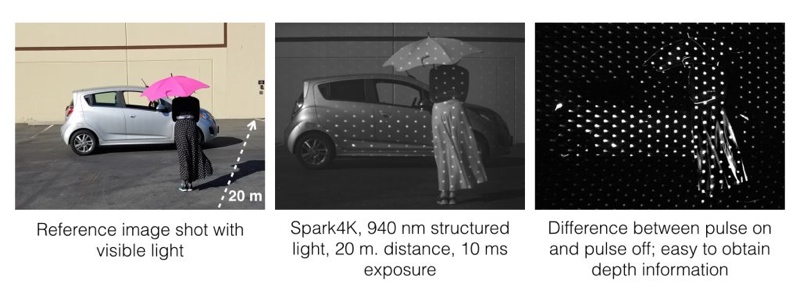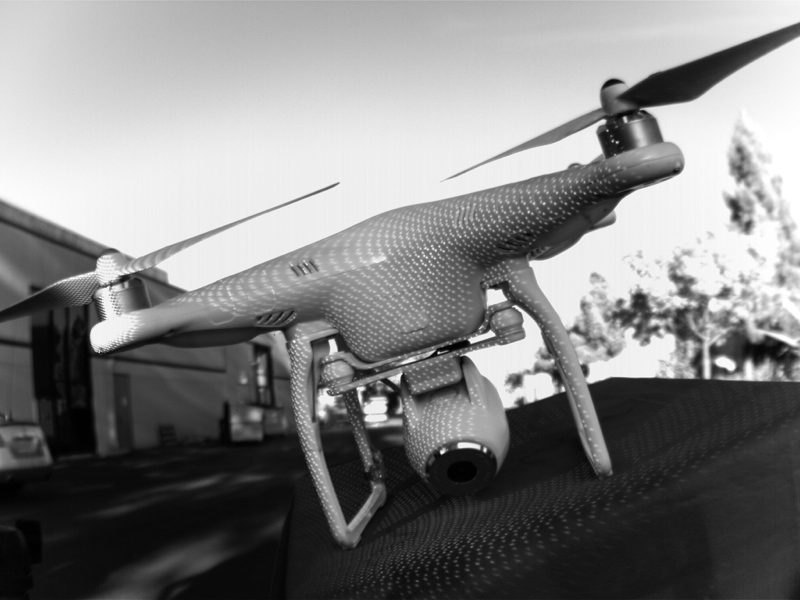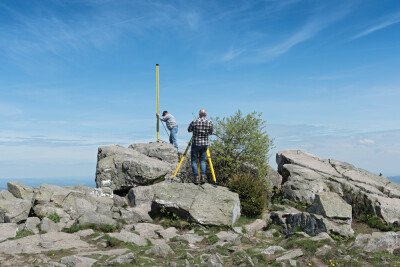InVisage is best known for its QuantumFilm, a smartphone camera chip that uses microscopic “quantum dots,” or small semiconductors, to capture photographs. The company claims that it produces photos four times as sharp as silicon-based photo chips, and with twice the dynamic range.
InVisage came out swinging with its first product. Now, the company is turning its attention to 3D sensing for UAVs.
The new Spark Micro-LiDAR (SML20) module gathers depth measurements at a range of up to 20 meters. It works by marrying a structured-light projector with a version of QuantumFilm that captures 4K video on near-infrared wavelengths, so it works even in direct sunlight. The sensor doesn’t seem to be LiDAR, really, but that could be by design—InVisage believes that its technology is better than LiDAR for autonomous obstacle avoidance.
Why is it better than LiDAR?
The QuantumFilm tech allows InVisage to make the sensor module impressively small. It’s 8.5 by 8.5 by 4.5 millimeters, which is much smaller than most existing LiDAR sensors. Given that it is manufactured as a microchip, the sensor is also very light and uses little power. With those specs, it should be suited for the payload of nearly any UAV.
Solid-state LiDAR claims to offer the same benefits to UAV users, but often comes in at a larger size—and is slow in coming to the market.

How about accuracy?
InVisage doesn’t list accuracy specs for their sensor. Instead, they explain that the Spark 4K perceives its surroundings “with an accurate depth map fused with the sharpness of 4K 30fps video.” InVisage says that this blend of data types offers more information for obstacle avoidance, standing in contrast “to the series of dotted outlines offered by LiDAR.” How that plays out in real-world applications remains to be seen.
How does it compare to other obstacle-avoidance sensors?
InVisage says that the Spark Micro-LiDAR is superior to stereo cameras and ultrasonic sensors. Stereo cameras require more computing power to process depth information, which adds weight to the UAV payload and eats up more power. Ultrasonic sensors, for their part, are limited to a range of 5 meters where the Spark Micro-LiDAR measures at 20 meters.
A range lower than 20 meters puts strict limit on how quickly the autonomous drone or vehicle can move. Jess Lee, InVisage president and CEO, explains that ranging at 20 meters is “crucial” if autonomous devices are to move at a minimum speed of 20 meters per second.
In order to perform at this speed, Lee says, “drones and other unmanned vehicles require at least half a second to recognize an upcoming obstacle and another half a second to change trajectory or decelerate to avoid it.”
What else do I need to know?
The Spark 4K Micro-LiDAR is on sale now through InVisage, and the company says that longer-range versions “at 100 meters and beyond” are coming soon.
You can also expect to see this technology in some real-world applications in the not too distant future, if InVisage’s list of investors is any indication. The company is venture-backed, with money from firms like Nokia Growth Partners and Intel Capital.






